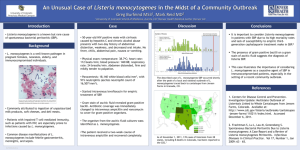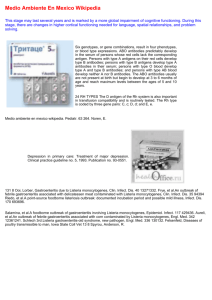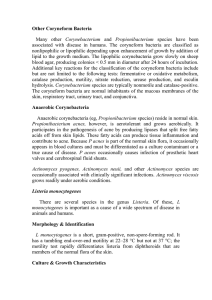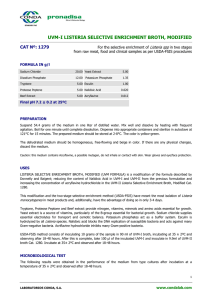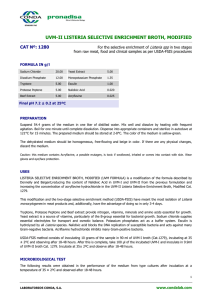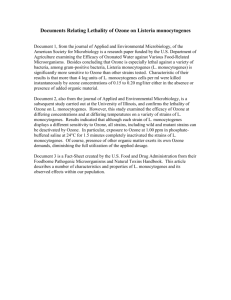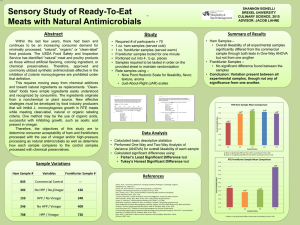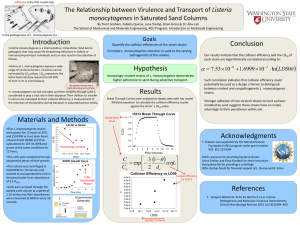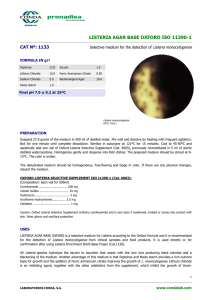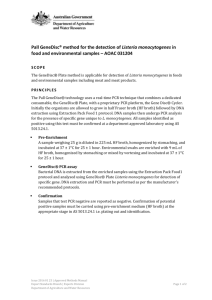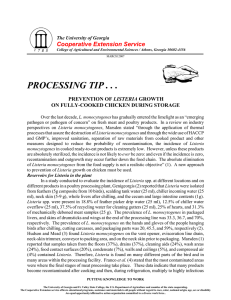Abstract - LhrC final
advertisement
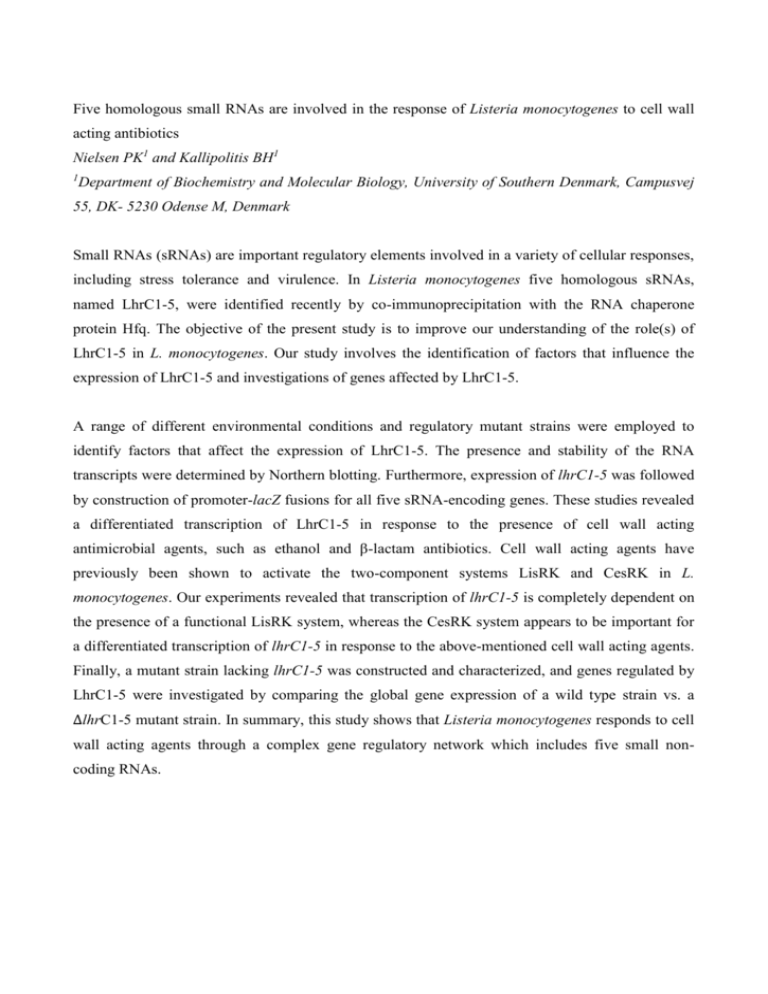
Five homologous small RNAs are involved in the response of Listeria monocytogenes to cell wall acting antibiotics Nielsen PK1 and Kallipolitis BH1 1 Department of Biochemistry and Molecular Biology, University of Southern Denmark, Campusvej 55, DK- 5230 Odense M, Denmark Small RNAs (sRNAs) are important regulatory elements involved in a variety of cellular responses, including stress tolerance and virulence. In Listeria monocytogenes five homologous sRNAs, named LhrC1-5, were identified recently by co-immunoprecipitation with the RNA chaperone protein Hfq. The objective of the present study is to improve our understanding of the role(s) of LhrC1-5 in L. monocytogenes. Our study involves the identification of factors that influence the expression of LhrC1-5 and investigations of genes affected by LhrC1-5. A range of different environmental conditions and regulatory mutant strains were employed to identify factors that affect the expression of LhrC1-5. The presence and stability of the RNA transcripts were determined by Northern blotting. Furthermore, expression of lhrC1-5 was followed by construction of promoter-lacZ fusions for all five sRNA-encoding genes. These studies revealed a differentiated transcription of LhrC1-5 in response to the presence of cell wall acting antimicrobial agents, such as ethanol and β-lactam antibiotics. Cell wall acting agents have previously been shown to activate the two-component systems LisRK and CesRK in L. monocytogenes. Our experiments revealed that transcription of lhrC1-5 is completely dependent on the presence of a functional LisRK system, whereas the CesRK system appears to be important for a differentiated transcription of lhrC1-5 in response to the above-mentioned cell wall acting agents. Finally, a mutant strain lacking lhrC1-5 was constructed and characterized, and genes regulated by LhrC1-5 were investigated by comparing the global gene expression of a wild type strain vs. a ΔlhrC1-5 mutant strain. In summary, this study shows that Listeria monocytogenes responds to cell wall acting agents through a complex gene regulatory network which includes five small noncoding RNAs.
